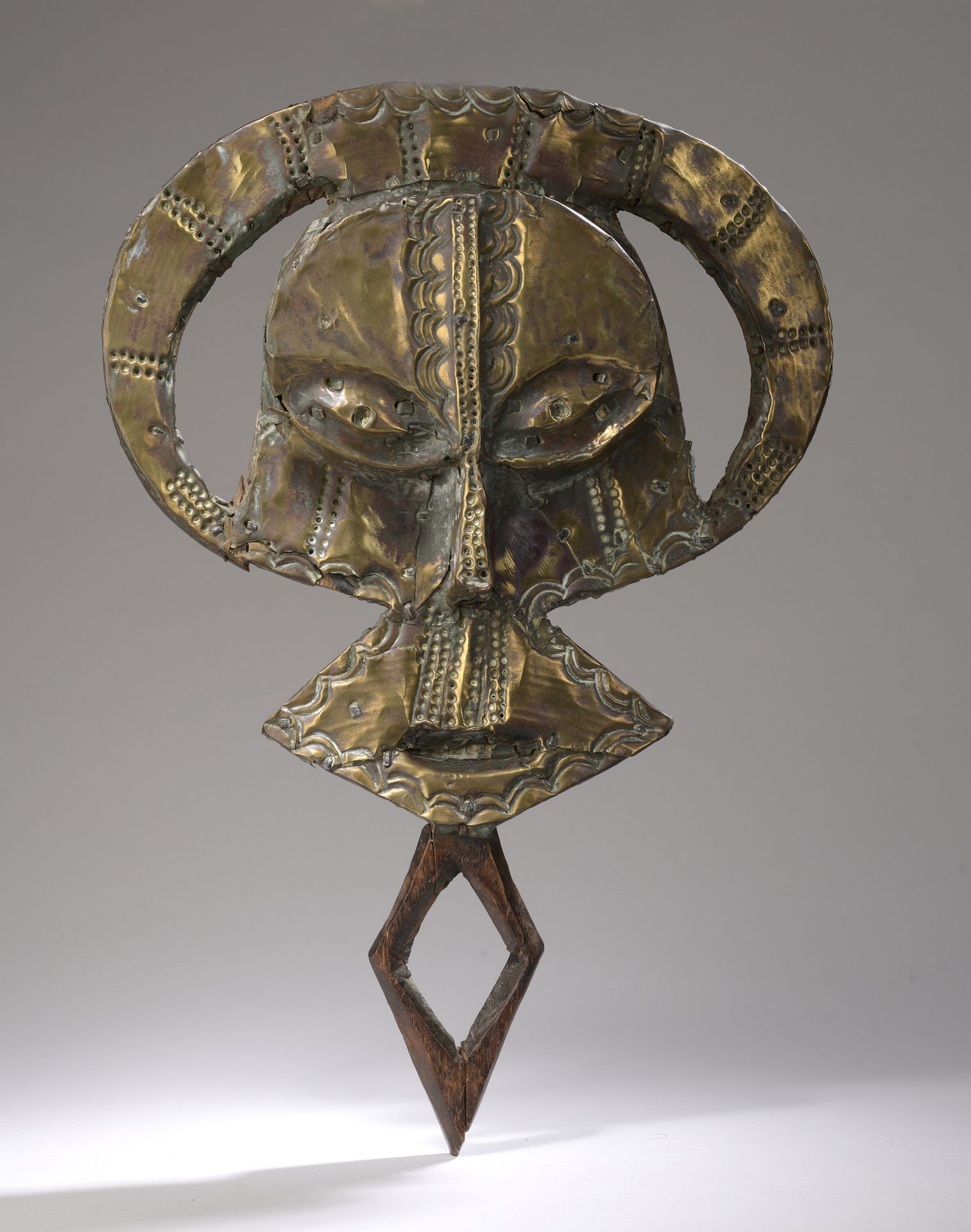Description
KOTA OBAMBA RELIEF FIGURE, Okonja region, Haut Ogooué, Gabon Wood, copper alloy, accidents. H. 43 cm PROVENANCE : - Collected in situ by Alexandre Dubroca (1899-1967), administrator in Gabon from 1930 to 1962. - Private collection, Paris, transmitted by family descent. Mbulu Ngulu in the characteristic style of the Okonja and Otala region, where a handful of sculptors at the end of the 19th century departed from the archetypal Kota forms to create works with lines that are as innovative as they are daring. Plated with metal on the obverse, it is adorned with a face that is enlivened by an oblique, concave-convex gaze, pierced at the pupils. The nose, in a straight volume, extends the rib crossing the forehead, made of a metal band. The mouth hollows out the lower part of the chin, sculpted in a second moment. A crescent at the top runs in a narrow band to the tips of the cheeks. The whole veneer is richly decorated with pointillist motifs and short doubled arches, more significantly inscribed on both sides of the frontal rib and the lower part of the face. The reverse side, left unfinished, is soberly crossed by a longitudinal rib. The lozenge-shaped base is thin, and quite compact, unlike the works from southern Gabon. The stapling of the metal plates attests to an ancient traditional work. Within a limited corpus, this work can be compared to a reliquary figure kept at the Musée du Quai Branly - Jacques Chirac in Paris (inventory number: 71.1935.80.111), donated by André Even before 1935. See Chafin, p. 253, fig. 151 for an example of the same type.
179
KOTA OBAMBA RELIEF FIGURE, Okonja region, Haut Ogooué, Gabon Wood, copper alloy, accidents. H. 43 cm PROVENANCE : - Collected in situ by Alexandre Dubroca (1899-1967), administrator in Gabon from 1930 to 1962. - Private collection, Paris, transmitted by family descent. Mbulu Ngulu in the characteristic style of the Okonja and Otala region, where a handful of sculptors at the end of the 19th century departed from the archetypal Kota forms to create works with lines that are as innovative as they are daring. Plated with metal on the obverse, it is adorned with a face that is enlivened by an oblique, concave-convex gaze, pierced at the pupils. The nose, in a straight volume, extends the rib crossing the forehead, made of a metal band. The mouth hollows out the lower part of the chin, sculpted in a second moment. A crescent at the top runs in a narrow band to the tips of the cheeks. The whole veneer is richly decorated with pointillist motifs and short doubled arches, more significantly inscribed on both sides of the frontal rib and the lower part of the face. The reverse side, left unfinished, is soberly crossed by a longitudinal rib. The lozenge-shaped base is thin, and quite compact, unlike the works from southern Gabon. The stapling of the metal plates attests to an ancient traditional work. Within a limited corpus, this work can be compared to a reliquary figure kept at the Musée du Quai Branly - Jacques Chirac in Paris (inventory number: 71.1935.80.111), donated by André Even before 1935. See Chafin, p. 253, fig. 151 for an example of the same type.
